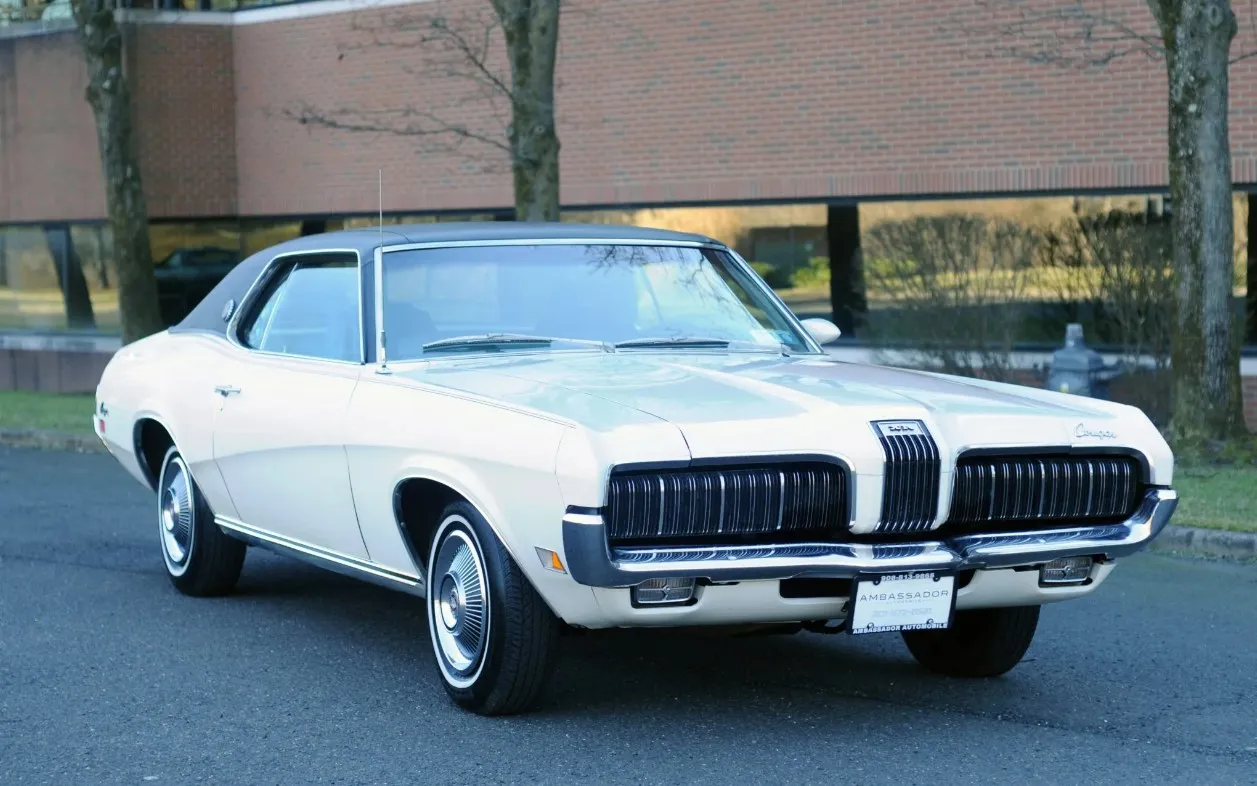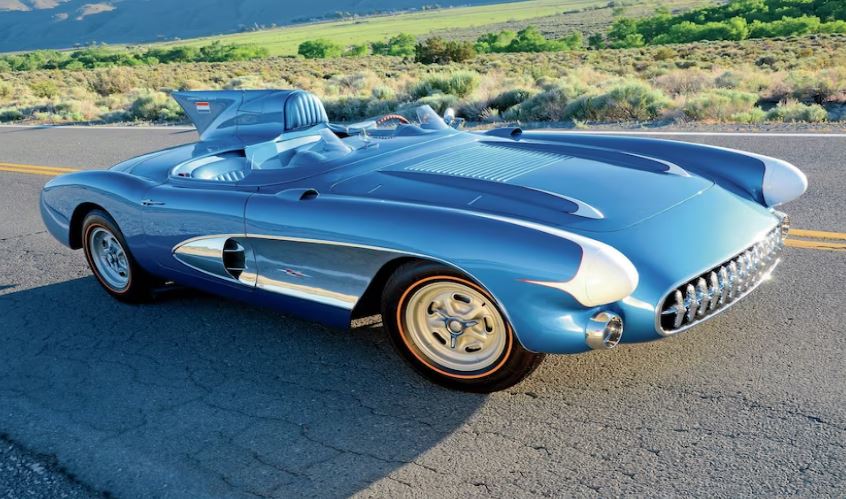In the realm of automotive design and engineering, the 1936 Bugatti Type 57SC Atlantic stands as an icon of timeless elegance and innovation. This exceptional automobile, a creation of the legendary French manufacturer Bugatti, is celebrated for its exquisite art deco design, unparalleled craftsmanship, and extraordinary performance. Often referred to as one of the most beautiful cars ever built, the Bugatti Type 57SC Atlantic is a masterpiece that continues to captivate enthusiasts and collectors around the world. In this article, we'll take a journey back in time to explore the history, design, and enduring legacy of this automotive work of art.
1. Historical Context and the Birth of the Type 57
In the early 20th century, Bugatti was a premier name in the automotive world, thanks to the vision and creativity of its founder, Ettore Bugatti. The company was renowned for producing elegant, fast, and technologically advanced vehicles that pushed the boundaries of automotive design and engineering.
By the 1930s, Bugatti had established itself as a dominant force in the world of Grand Prix racing and luxury automobiles, with models like the Type 35 and Type 41 Royale. However, the company faced increasing competition from other manufacturers, such as Alfa Romeo, Mercedes-Benz, and Bentley, prompting Bugatti to develop a new model that would reassert its supremacy in the marketplace.
The Type 57 was conceived as a luxury touring car that would combine Bugatti's racing heritage with the latest advancements in automotive engineering. Ettore's son, Jean Bugatti, who was a talented designer and engineer in his own right, played a pivotal role in the development of the Type 57. Jean's involvement in the project marked a generational shift within the company, as he brought a fresh perspective and a keen eye for aesthetics to the design process.
2. Design and Aesthetics
The Bugatti Type 57SC Atlantic is the epitome of art and design in the automotive realm. Its striking and unique appearance is a testament to the genius of Jean Bugatti, who was responsible for the car's breathtaking styling. The Atlantic's design was heavily influenced by the "Aérolithe," a prototype concept car that was unveiled at the 1935 Paris Auto Salon. The Aérolithe featured a revolutionary body made from Elektron, a lightweight magnesium alloy that was difficult to work with and could not be welded using conventional techniques.
To overcome this challenge, Jean Bugatti devised an innovative solution: instead of welding the body panels together, he riveted them using a prominent central spine that ran the length of the car, giving the Atlantic its distinctive dorsal fin. This ingenious construction method not only allowed for the use of the lightweight Elektron material but also imbued the car with a futuristic, almost otherworldly appearance.
The Atlantic's design was characterized by its flowing lines, low-slung profile, and dramatic proportions. The car's long hood, teardrop-shaped fenders, and tapered rear end created a sense of motion and speed, even when the vehicle was at a standstill. The Atlantic's most striking feature, however, was its split windshield, which accentuated the car's central spine and further emphasized its avant-garde aesthetics.
3. Engineering and Performance
Underneath its stunning exterior, the Bugatti Type 57SC Atlantic was a masterpiece of automotive engineering. The car was built on a modified version of the Type 57 chassis, which featured a shorter wheelbase and a more rigid frame to accommodate the Atlantic's unique bodywork. The chassis employed a sophisticated suspension system that utilized a solid front axle with semi-elliptical leaf springs, and a live rear axle with reversed quarter-elliptical leaf springs, providing excellent handling and ride comfort.
The heart of the Atlantic was its engine, a 3.3-liter, straight-eight, dual overhead camshaft (DOHC) unit that was derived from Bugatti's racing engines. In its standard configuration, the engine produced approximately 135 horsepower, but when equipped with a Roots-type supercharger (as denoted by the "SC" in the Atlantic's name), its output increased to an impressive 200 horsepower. This powerplant was mated to a 4-speed manual transmission that drove the rear wheels.
The Atlantic's performance was nothing short of remarkable for its time. With its supercharged engine, the car could accelerate from 0 to 60 mph (0 to 97 km/h) in under 10 seconds and reach a top speed of around 125 mph (201 km/h). The car's lightweight construction, powerful engine, and advanced suspension system made it a formidable performer on the road, rivaling the fastest sports cars of its era.
4. Production and Rarity
The Bugatti Type 57SC Atlantic was produced in extremely limited numbers, with only four examples ever built. Each car was handcrafted at Bugatti's factoryin Molsheim, France, and tailored to the specific tastes and requirements of its owner. As a result, no two Atlantics are exactly alike, with each vehicle featuring unique details and finishes that set it apart from its siblings.
The first Atlantic, chassis number 57374, was built for British banker and Bugatti enthusiast Victor Rothschild. This car, which is often referred to as the "Rothschild Atlantic," featured a dark blue exterior and a luxurious interior with tan leather upholstery. The second Atlantic, chassis number 57473, was owned by French entrepreneur Jacques Holzschuch and is known as the "Holzschuch Atlantic." The third example, chassis number 57591, was originally built for British sportsman Richard B. Pope and is commonly referred to as the "Pope Atlantic."
The fourth and final Atlantic, chassis number 57453, is perhaps the most famous and enigmatic of the four. Known as the "La Voiture Noire" (The Black Car), this Atlantic was owned by Jean Bugatti himself and was used as his personal vehicle. Tragically, the car disappeared during World War II and has never been found, fueling countless theories and legends about its whereabouts and ultimate fate.
5. Legacy and Impact
The Bugatti Type 57SC Atlantic has had a profound and lasting impact on the automotive world. Its groundbreaking design, innovative engineering, and unparalleled rarity have made it one of the most iconic and desirable classic cars in existence. The Atlantic has been a regular fixture at prestigious concours d'elegance events, where it has won numerous awards and accolades for its exceptional beauty and historical significance.
The Atlantic has also inspired numerous tributes and homages from both Bugatti and other automakers. In 1999, Bugatti introduced the Chiron 18/3 concept car, which featured design elements reminiscent of the Atlantic, such as the split windshield and central fin. More recently, Bugatti unveiled the one-off "La Voiture Noire" hypercar at the 2019 Geneva Motor Show, a modern reinterpretation of the legendary Type 57SC Atlantic that is said to be the most expensive new car ever sold, with a price tag of $18.7 million.
In addition to its influence on automotive design, the Atlantic has had a profound effect on the collector car market. With only three of the four examples still known to exist, the Atlantic is among the rarest and most valuable cars in the world. In 2010, the "Holzschuch Atlantic" changed hands for a reported $30 million, setting a new record for the highest price ever paid for a car at that time. The other surviving Atlantics are believed to be worth even more, reflecting the car's extraordinary appeal and enduring mystique.
The 1936 Bugatti Type 57SC Atlantic is a true automotive icon, a masterpiece of design and engineering that has captivated the imaginations of car enthusiasts and collectors for generations. Its stunning aesthetics, groundbreaking construction methods, and exceptional performance make it a unique and important milestone in the history of the automobile.
The Atlantic's influence can be seen in the design language of numerous modern cars, as well as in the values and aspirations of automotive collectors worldwide. Its rarity, combined with its undeniable beauty and historical significance, has ensured that the Atlantic remains one of the most desirable and sought-after classic cars in existence.
In the pantheon of automotive legends, the Bugatti Type 57SC Atlantic holds a special place as a symbol of innovation, artistry, and craftsmanship. This extraordinary automobile is a testament to the vision and genius of Ettore and Jean Bugatti, a father-son duo whose passion for excellence and uncompromising attention to detail created a timeless masterpiece that will continue to inspire and captivate for generations to come.


